Watercolour paintings are one of the most frequent genres of art to visit our studio. Their materials and display location are often the cause of this, with many antique and modern pieces succumbing to moisture, foxing and discolouration over a long period of time. But what can be done to prevent these issues? And how can we best care for these often sentimental and valuable artworks?
 Above: a selection of watercolour paintings including work by Winslow Homer, William Trost Richards, John La Farge, Thomas Girtin, John Downman, Henri-Edmond Cross, Attilio Simonetti, Vincenzo Leonardi, Peder Severin Krøyer and William Blake
Above: a selection of watercolour paintings including work by Winslow Homer, William Trost Richards, John La Farge, Thomas Girtin, John Downman, Henri-Edmond Cross, Attilio Simonetti, Vincenzo Leonardi, Peder Severin Krøyer and William Blake
This article will cover the history of watercolour painting, as well as going into detail about how to care for these artworks at home. We will also feature some of the restoration techniques and results that can be achieved following sensitive conservation treatments in our studio.
 Above: a watercolour painting before and after restoration by our paper conservator
Above: a watercolour painting before and after restoration by our paper conservator
Watercolour materials
What is watercolour paint made of? Besides the coloured pigment there is a binder to keep the colour intact. This binder would have historically been a sugar or bone hide glue, from the 19th century onwards it is typically gum arabic. Preservatives are also present to aid in durability and additives such as honey and glycerin help the pigment to easily become soluble when met with a wet brush.
 Above: a well used palette of watercolour paints
Above: a well used palette of watercolour paints
Historically, the pigment within watercolours would have been purchased separately from an apothecary and mixed with the binder and other ingredients in a studio setting. In 1781, the first ‘paint cakes’ were developed in London, allowing an artist to obtain a palette of pre-prepared colours. This invention encouraged the popularity of watercolour painting in the 19th century.
 Above: watercolour paint often accompanies drawings in pencil and charcoal or used to colour a monotone print – this detail is from a study for Bathers Under a Bridge by Paul Cézanne, 1900-06
Above: watercolour paint often accompanies drawings in pencil and charcoal or used to colour a monotone print – this detail is from a study for Bathers Under a Bridge by Paul Cézanne, 1900-06
The history of watercolour painting
Watercolour painting is one of the oldest forms of art. The mixing of a dry pigment with water to achieve a desired image can be dated back as far as the palaeolithic period. However, their use as a key component of western art history is at the dawn of the renaissance with Albrecht Dürer.
 Above: a detail from a Bohemian watercolour on vellum, 1405-10
Above: a detail from a Bohemian watercolour on vellum, 1405-10
Dürer is credited with being one of the first landscape painters in Europe due to his use of watercolour. On his first trip to Italy in 1494, he travelled through the Alps with a sketchbook; the watercolours from this period would go on to inform his later works that show a striking accuracy in terms of geography.
 Above: a drawing finished with watercolours of Count of Nassau and his Wife by Bernard van Orley, 1530-35
Above: a drawing finished with watercolours of Count of Nassau and his Wife by Bernard van Orley, 1530-35
The predominance of oil painting from the 16th century onwards is partially due to their longevity, as it would have been difficult to safely display a watercolour painting or have it in the same scale and grand tone of an oil on canvas.
 Above: a detail from a 16th century embroidery design in watercolour, featuring the coat of arms of the Medici family
Above: a detail from a 16th century embroidery design in watercolour, featuring the coat of arms of the Medici family
Watercolours were instead used as a preparatory tool in artist’s sketches and modello or ‘cartoon’ to inform a final composition in oil paint. Today these sketches and modello drawings can achieve high prices at auction, especially if they have a connection to one of the Old Masters.
 Above: a composition study by Jean-Baptiste Greuze for his 1761 painting The Marriage Contract
Above: a composition study by Jean-Baptiste Greuze for his 1761 painting The Marriage Contract
Perhaps due to the Grand Tour undertaken by many noblemen and artists in the 18th century, watercolours of classical artefacts and tourist sights became a desirable souvenir. This helped to establish an enthusiasm for the genre in Britain, with many great artists beginning to practise almost entirely in this medium including MW Turner, Paul Sandy and Thomas Girtin.
 Above: a detail from a 1787 portrait of The Dyson Children by John Downman, completed in chalk, watercolour and graphite
Above: a detail from a 1787 portrait of The Dyson Children by John Downman, completed in chalk, watercolour and graphite
To further cement the genre as an important artistic form, the ‘Society of Painters in Water Colours’ was established in London in 1804. Like the oil painters of the Royal Academy, watercolourists exhibited at society events and had a fierce rivalry. It was in this era that watercolour painting became an extremely popular medium for patrons and collectors, as well as upper and middle classes who undertook it as an amateur hobby.
 Above: a detail from Turner’s The Lake of Zug composed in watercolour over graphite, 1843
Above: a detail from Turner’s The Lake of Zug composed in watercolour over graphite, 1843
By the end of the 19th century it was becoming clear that watercolour pigments could easily fade over time. A struggle to conserve a collection of Turner’s watercolours inherited by the Tate saw first hand the non-permanence of such pigments, prior to the specialist interventions we have today. This led to a slow decline in watercolour painting as a professional practice, due to a perceived loss of value and visual impact.
 Above: a detail from a drawing with watercolour details by Vincent Van Gogh, 1881
Above: a detail from a drawing with watercolour details by Vincent Van Gogh, 1881
Despite this, some early 20th century artists still used watercolour frequently in their sketches and sometimes in more dominant parts of their work. The impressionists made use of the genre, with Paul Cezanne being a notable example. Modernists such as Klee, Kandinsky and Schiele produced important works in the watercolour medium.
 Above: a detail from Still Life with a Watermelon and Pomegranates by Paul Cézanne, 1900-06
Above: a detail from Still Life with a Watermelon and Pomegranates by Paul Cézanne, 1900-06
Caring for watercolour paintings
Watercolours are most often completed on paper. Early parchment made of linen rags and cellulose avoided any extra chemicals, making them more resilient to deterioration in colour and structure. From the 1840s onwards, paper was made from wood pulp and acidic chemicals such as lignin. This additive eventually turns the paper brown, brittle and often attracts the occurrence of foxing. Whilst this innate vulnerability cannot be avoided, you can implement care techniques to avoid any encouragement of decay.
 Above: the paper has discoloured on this watercolour painting due to acidic framing materials
Above: the paper has discoloured on this watercolour painting due to acidic framing materials
The recommended relative humidity for paper is around 50% as this ensures that it is not too moist or too dry. A very humid atmosphere, as found in bathrooms and kitchens, may result in rippling of the paper or mould growth. Conversely, a very dry atmosphere can result in a brittle surface. The ideal temperature for paper is 20 to 22 degrees celsius.
 Above: this watercolour was badly affected by mould, it was restored by our conservator with a successful result
Above: this watercolour was badly affected by mould, it was restored by our conservator with a successful result
One of the biggest issues facing watercolours is fading of colours when exposed to light. UV rays from sunlight and bright artificial lights will encourage your watercolour to slowly disappear. As this loss of colour is often widespread, it cannot be easily restored and is usually beyond repair. To avoid this happening, our experts always recommend that a work on paper is displayed in shaded conditions and framed with UV protective glass or museum glass.
 Above: the print on the left has been protected from sunlight and the one on the right shows signs of colour loss due to exposure
Above: the print on the left has been protected from sunlight and the one on the right shows signs of colour loss due to exposure
The pigments most vulnerable to fading include:
- Van Dyck Brown
- Carmine
- Indigo
Acids from old framing materials may also be present and become worse with time. Backing boards and mounts made from inappropriate materials can lead to widespread damage. Always ensure that conservation safe materials are used in the framing process. Our framing team will always ensure that low pH materials are used. Below you can see a watercolour illustration that was badly affected by framing acids, before and after restoration by our conservator.

It is recommended that old frames are assessed by our paper conservator to check for any hidden signs of acidic decay. Frames should be as safe and secure as possible, always check that the backing gum tape is sealing gaps to prevent an opening for dust, airborne contaminants and insects.
 Above: this watercolour was badly affected by acid damage and natural deterioration of the paper, before and after restoration by our paper conservator
Above: this watercolour was badly affected by acid damage and natural deterioration of the paper, before and after restoration by our paper conservator
Watercolour restoration
Our ICON accredited paper conservator often restores watercolours with minor and major levels of damage. Using sensitive techniques, paper can be cleaned of acidic discolouration, foxing and mould. It can also be flattened and stabilised following occurrences of creasing, moisture damage and tears. Below is an example of the results that can be achieved in our studio:
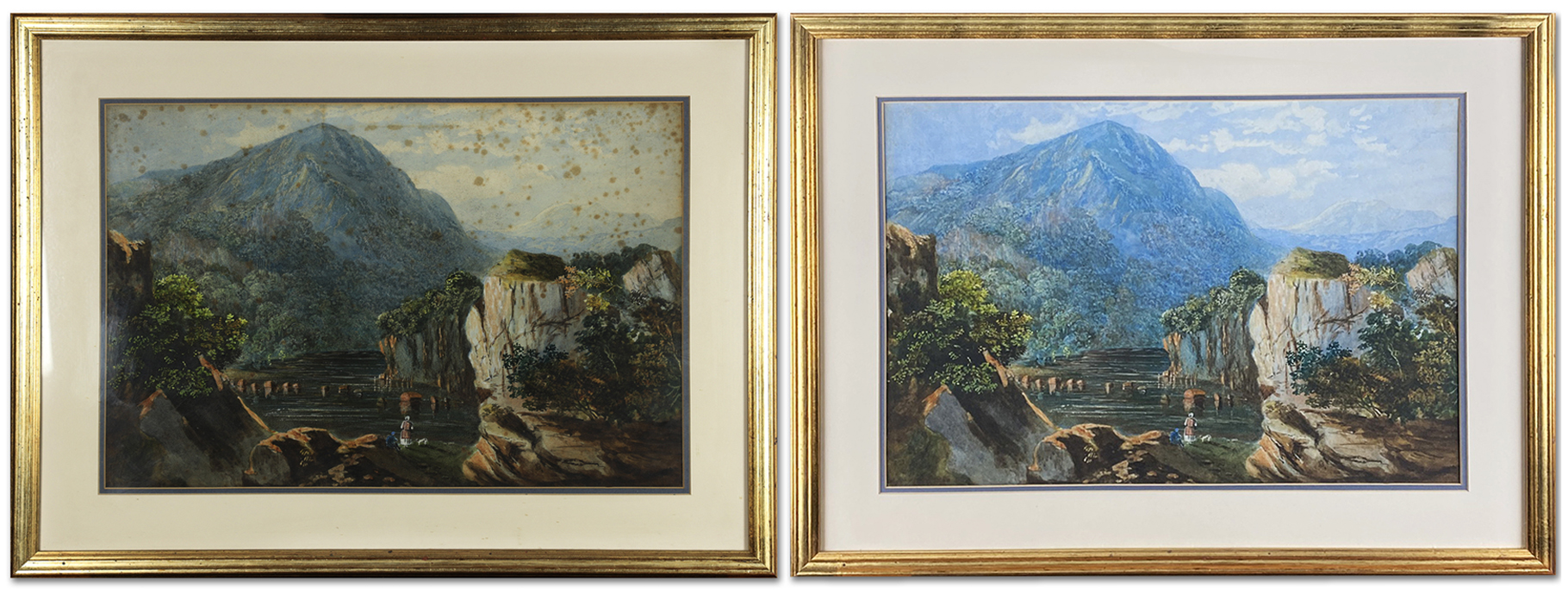
Please see the videos below for more information on watercolour conservation and tips from our paper conservator:
How can we help?
If you have a watercolour restoration need, please contact our team as soon as possible for helpful advice and guidance.
To make contact please email us via [email protected] or call 0207 112 7576

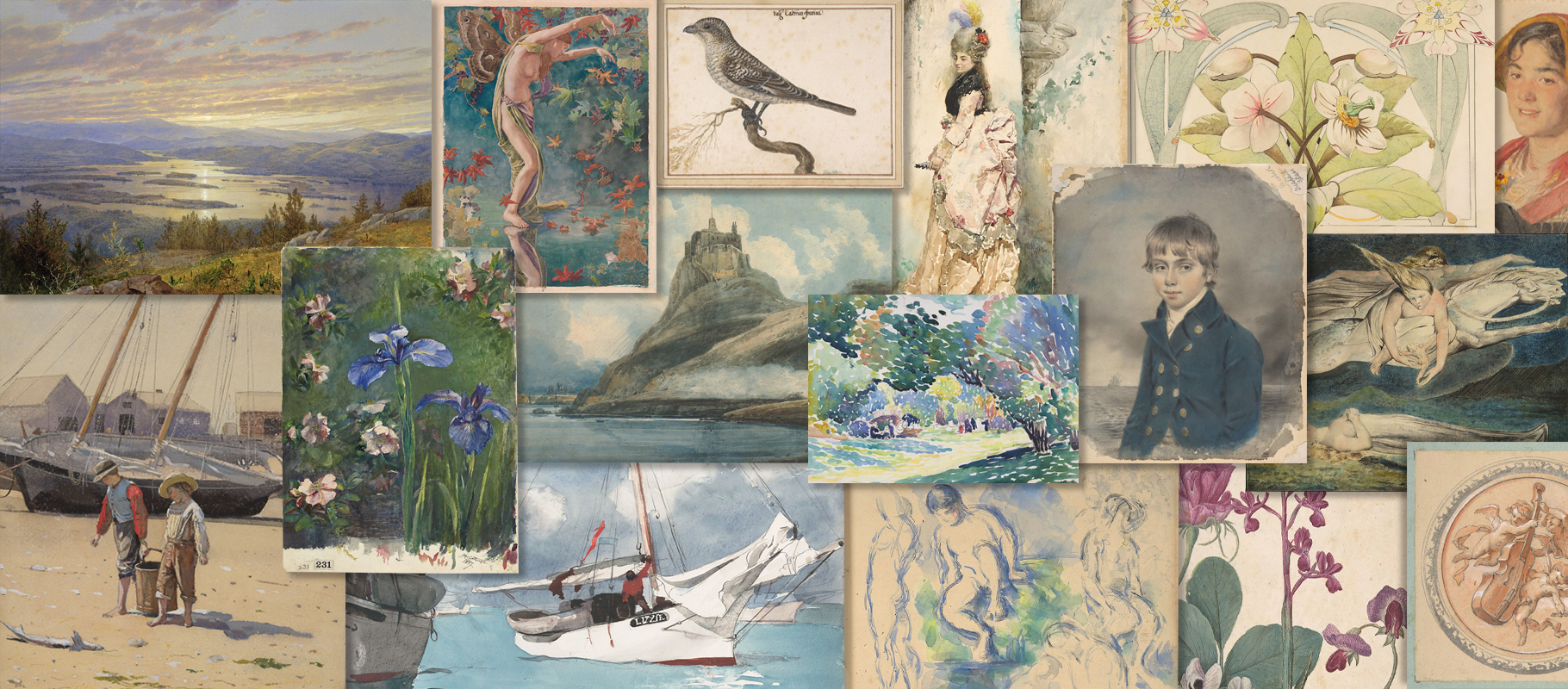 Above: a selection of watercolour paintings including work by Winslow Homer, William Trost Richards, John La Farge, Thomas Girtin, John Downman, Henri-Edmond Cross, Attilio Simonetti, Vincenzo Leonardi, Peder Severin Krøyer and William Blake
Above: a selection of watercolour paintings including work by Winslow Homer, William Trost Richards, John La Farge, Thomas Girtin, John Downman, Henri-Edmond Cross, Attilio Simonetti, Vincenzo Leonardi, Peder Severin Krøyer and William Blake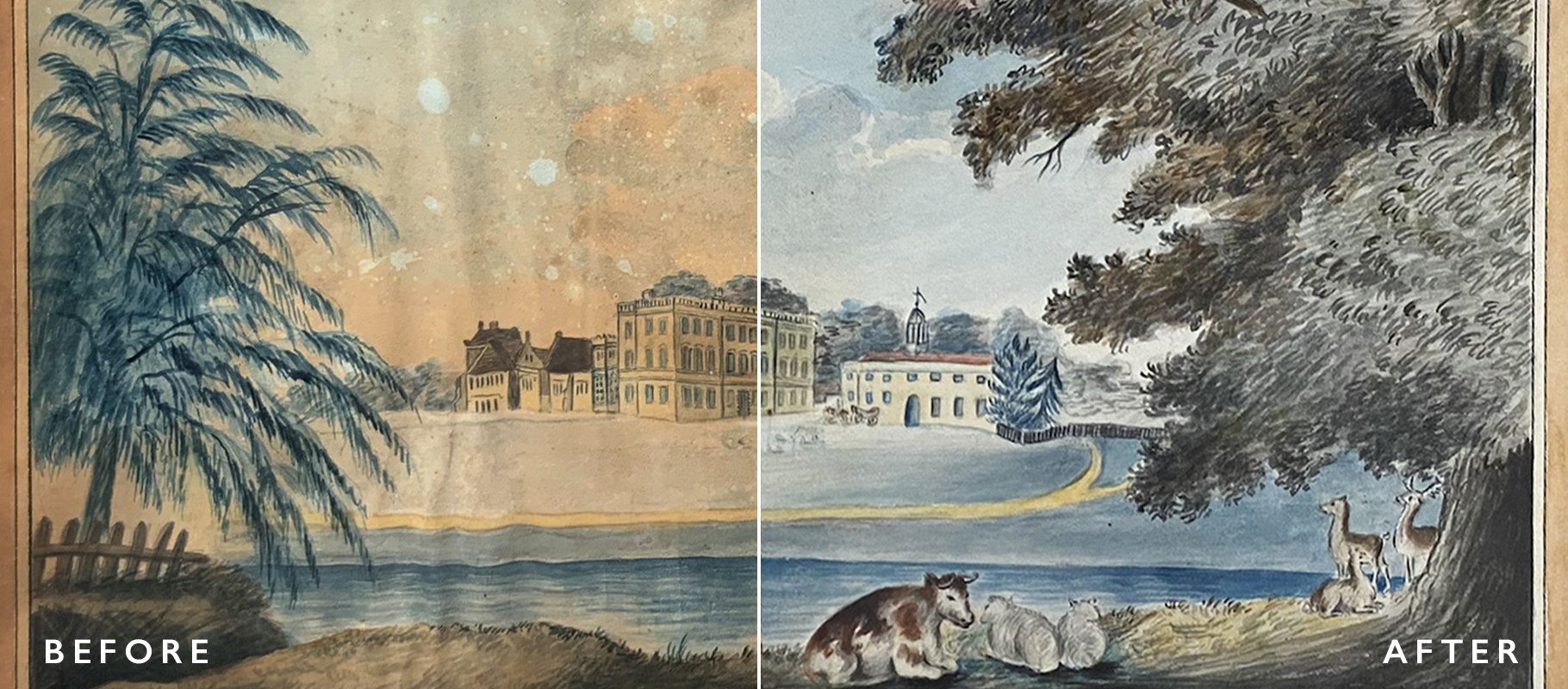 Above: a watercolour painting before and after restoration by our paper conservator
Above: a watercolour painting before and after restoration by our paper conservator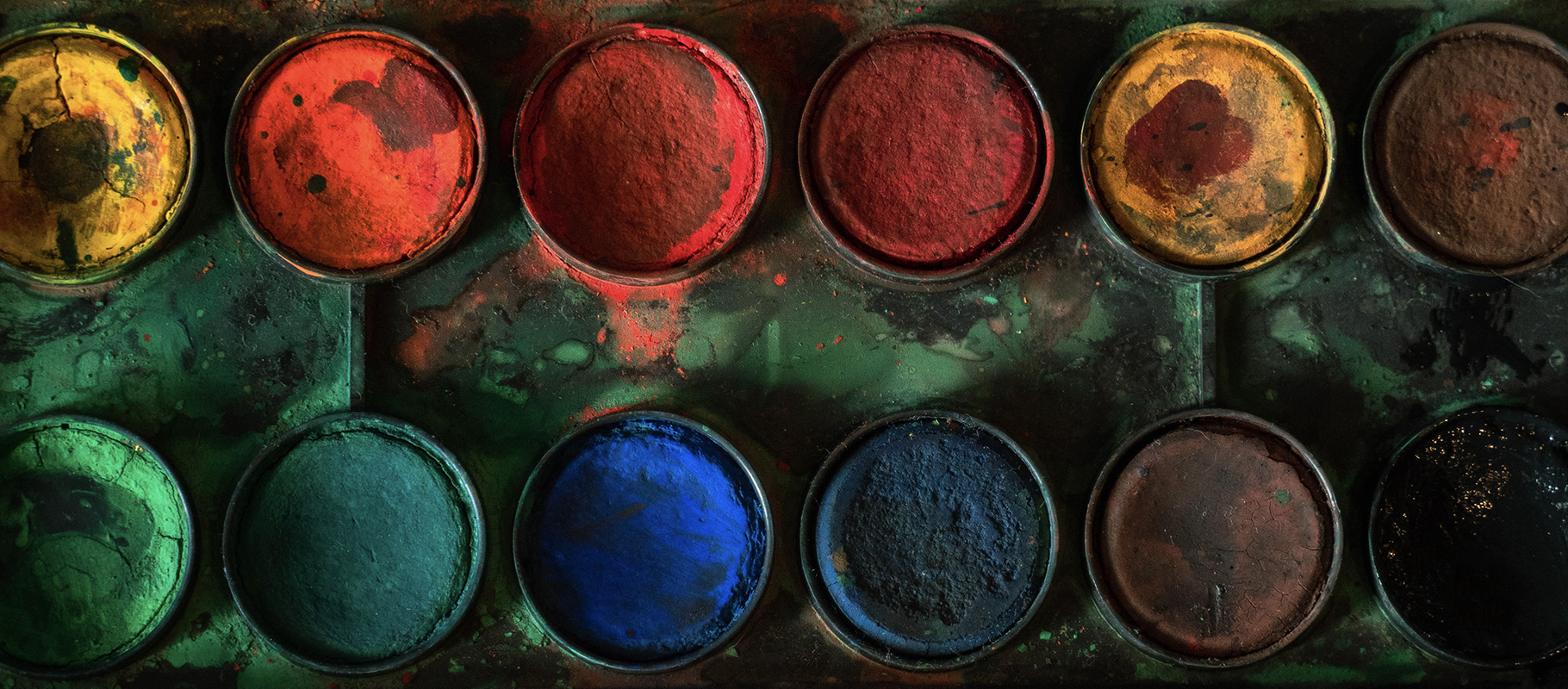 Above: a well used palette of watercolour paints
Above: a well used palette of watercolour paints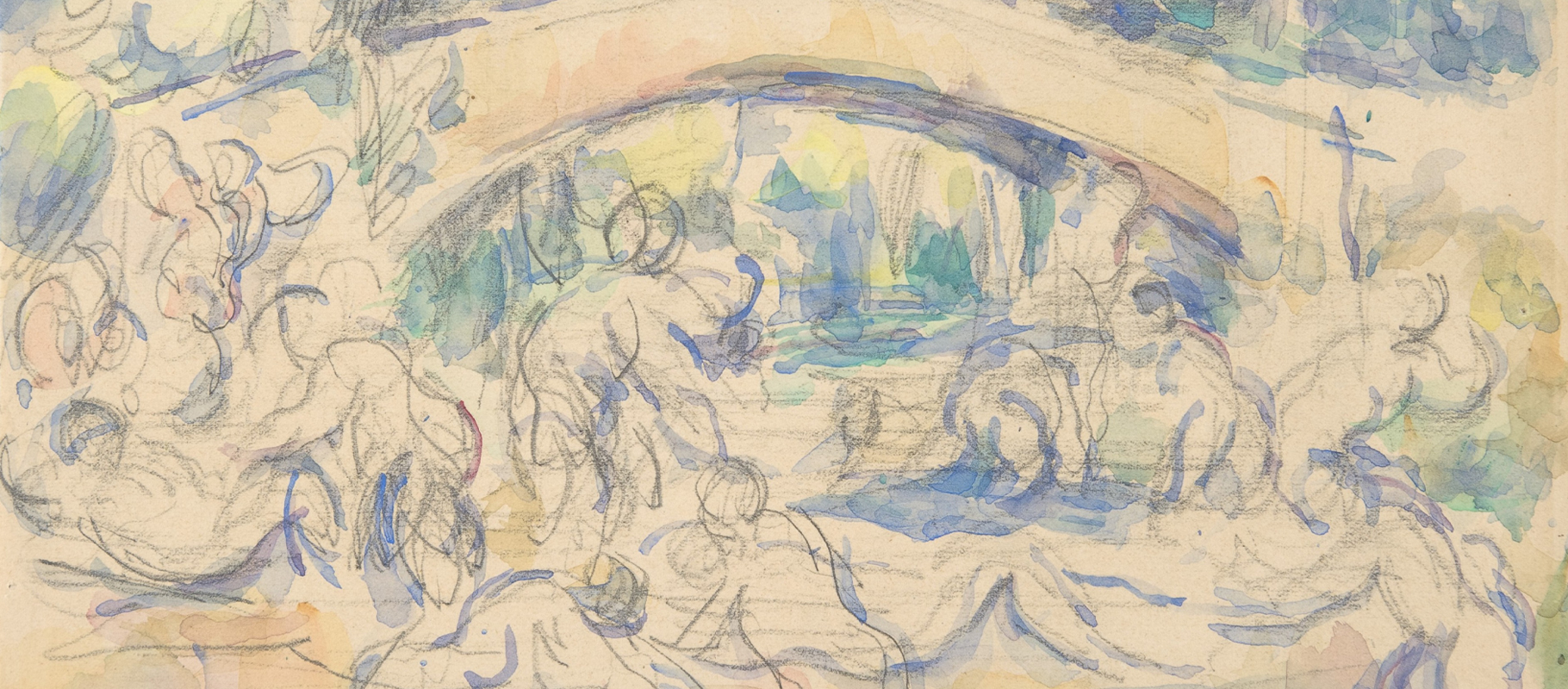 Above: watercolour paint often accompanies drawings in pencil and charcoal or used to colour a monotone print – this detail is from a study for Bathers Under a Bridge by Paul Cézanne, 1900-06
Above: watercolour paint often accompanies drawings in pencil and charcoal or used to colour a monotone print – this detail is from a study for Bathers Under a Bridge by Paul Cézanne, 1900-06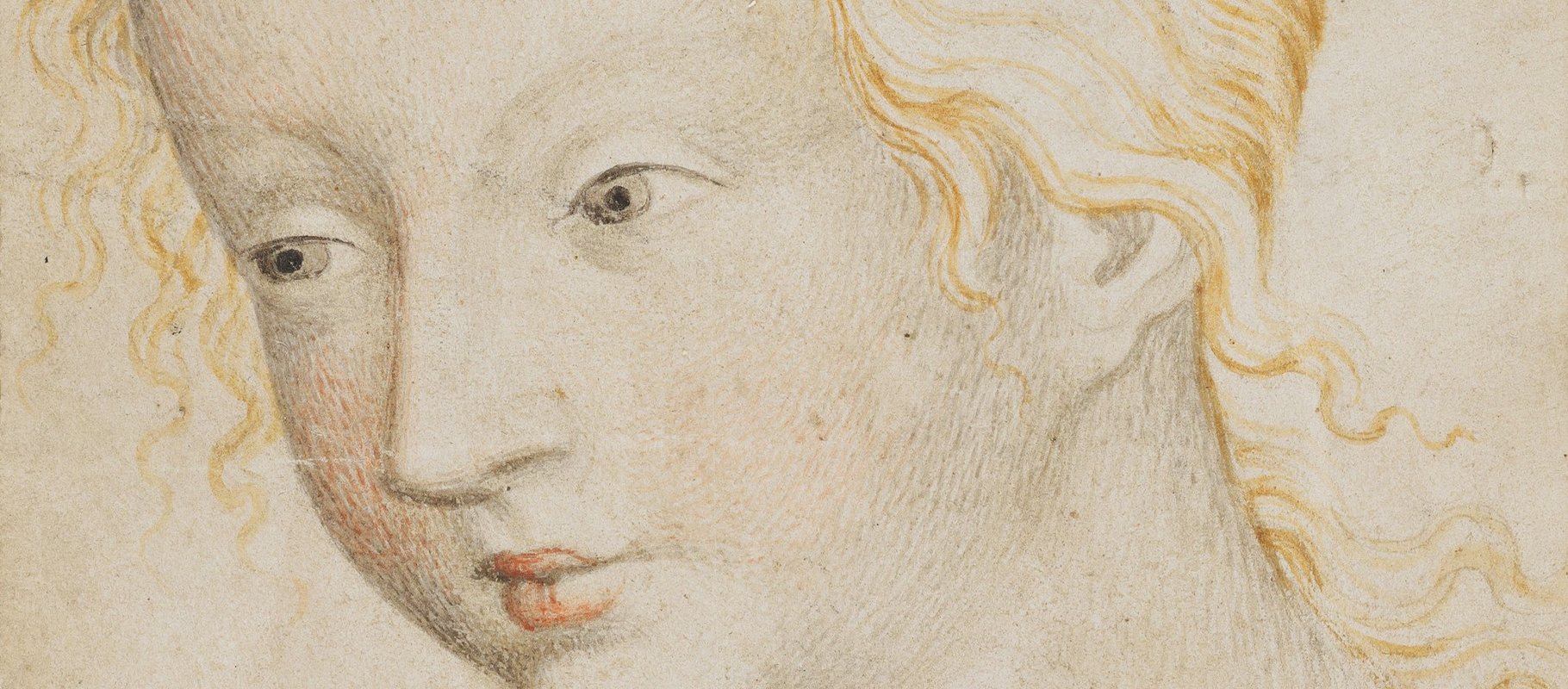 Above: a detail from a Bohemian watercolour on vellum, 1405-10
Above: a detail from a Bohemian watercolour on vellum, 1405-10 Above: a drawing finished with watercolours of Count of Nassau and his Wife by Bernard van Orley, 1530-35
Above: a drawing finished with watercolours of Count of Nassau and his Wife by Bernard van Orley, 1530-35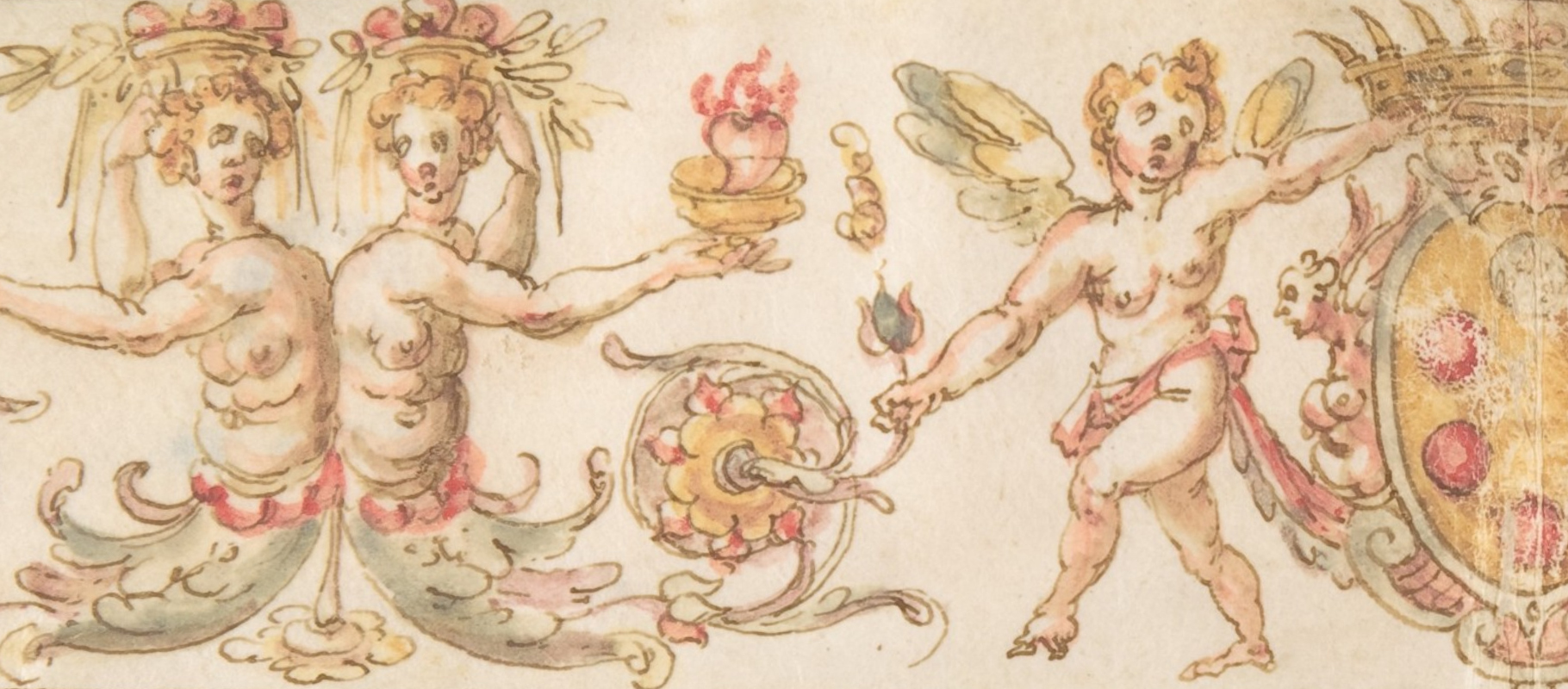 Above: a detail from a 16th century embroidery design in watercolour, featuring the coat of arms of the Medici family
Above: a detail from a 16th century embroidery design in watercolour, featuring the coat of arms of the Medici family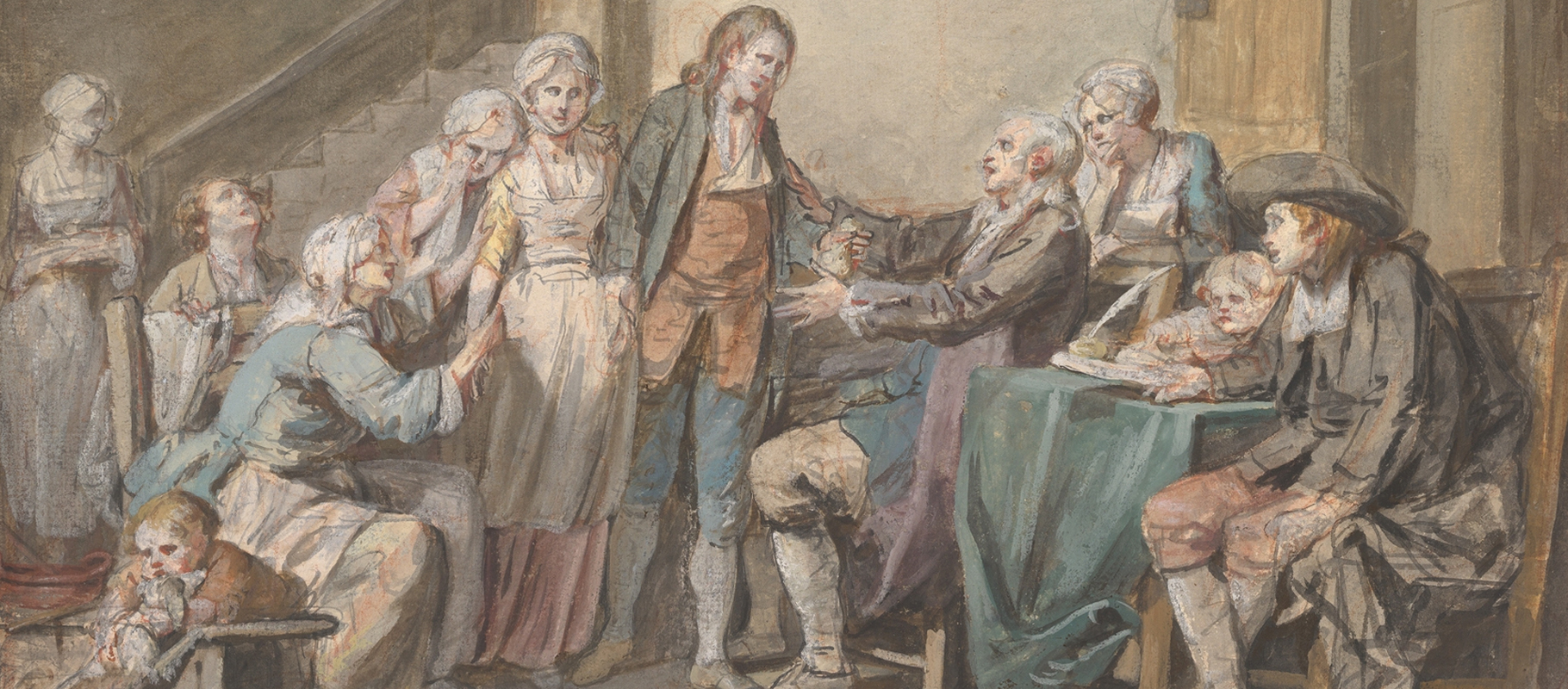 Above: a composition study by Jean-Baptiste Greuze for his 1761 painting The Marriage Contract
Above: a composition study by Jean-Baptiste Greuze for his 1761 painting The Marriage Contract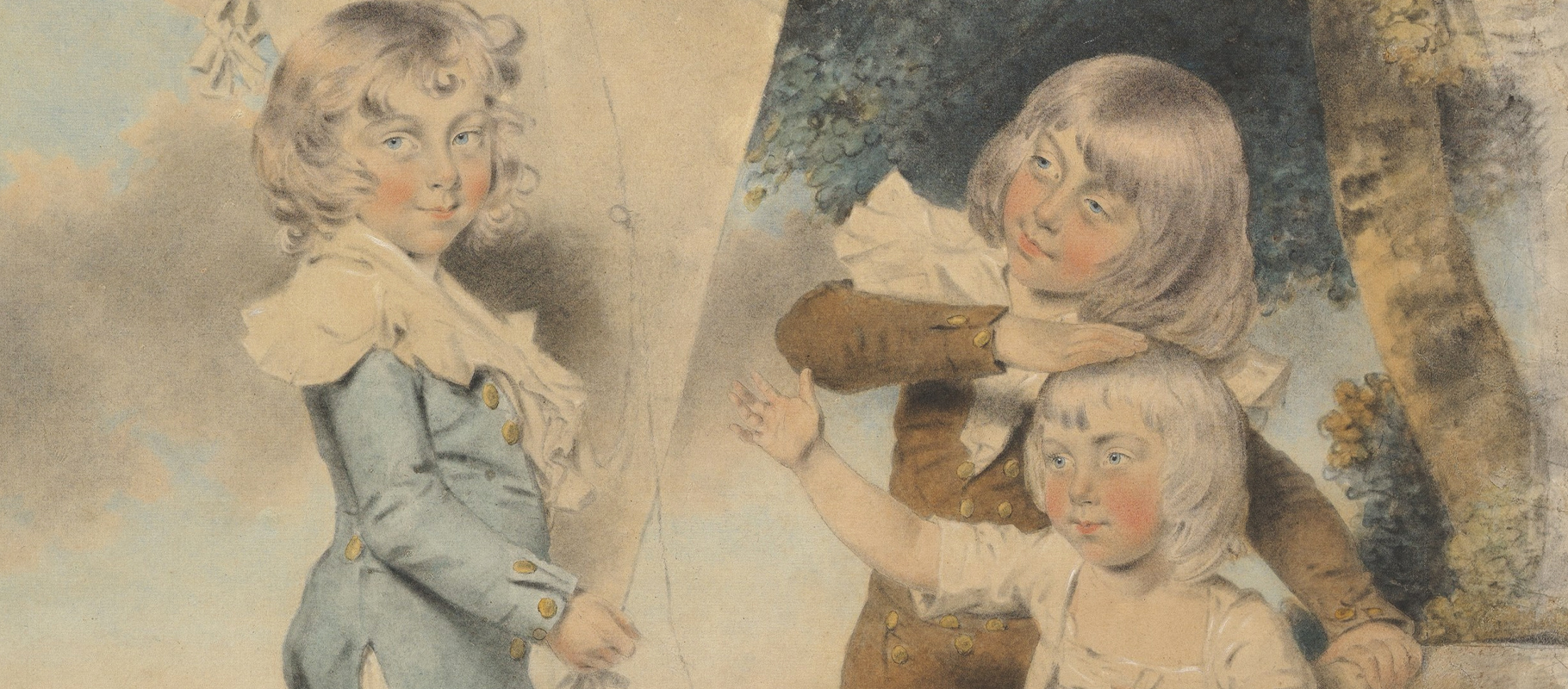 Above: a detail from a 1787 portrait of The Dyson Children by John Downman, completed in chalk, watercolour and graphite
Above: a detail from a 1787 portrait of The Dyson Children by John Downman, completed in chalk, watercolour and graphite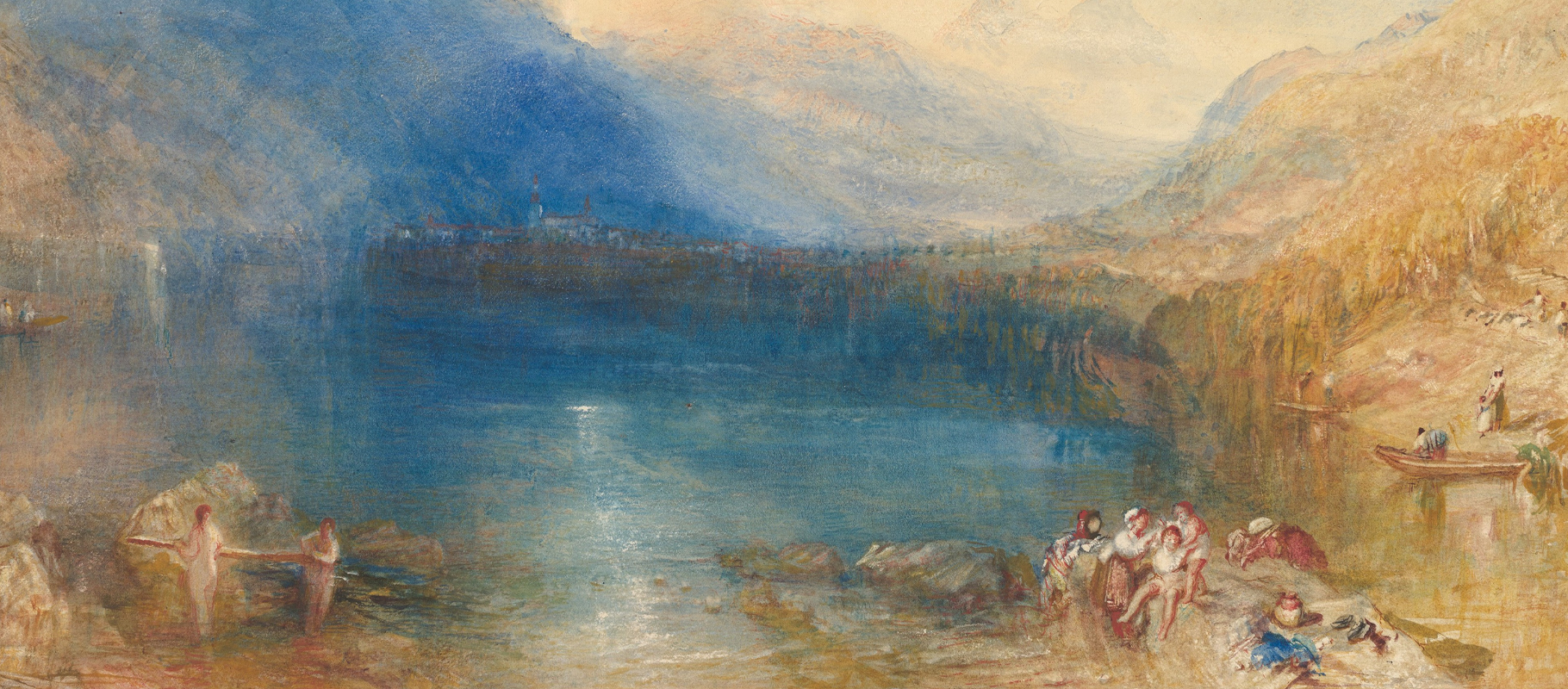 Above: a detail from Turner’s The Lake of Zug composed in watercolour over graphite, 1843
Above: a detail from Turner’s The Lake of Zug composed in watercolour over graphite, 1843 Above: a detail from a drawing with watercolour details by Vincent Van Gogh, 1881
Above: a detail from a drawing with watercolour details by Vincent Van Gogh, 1881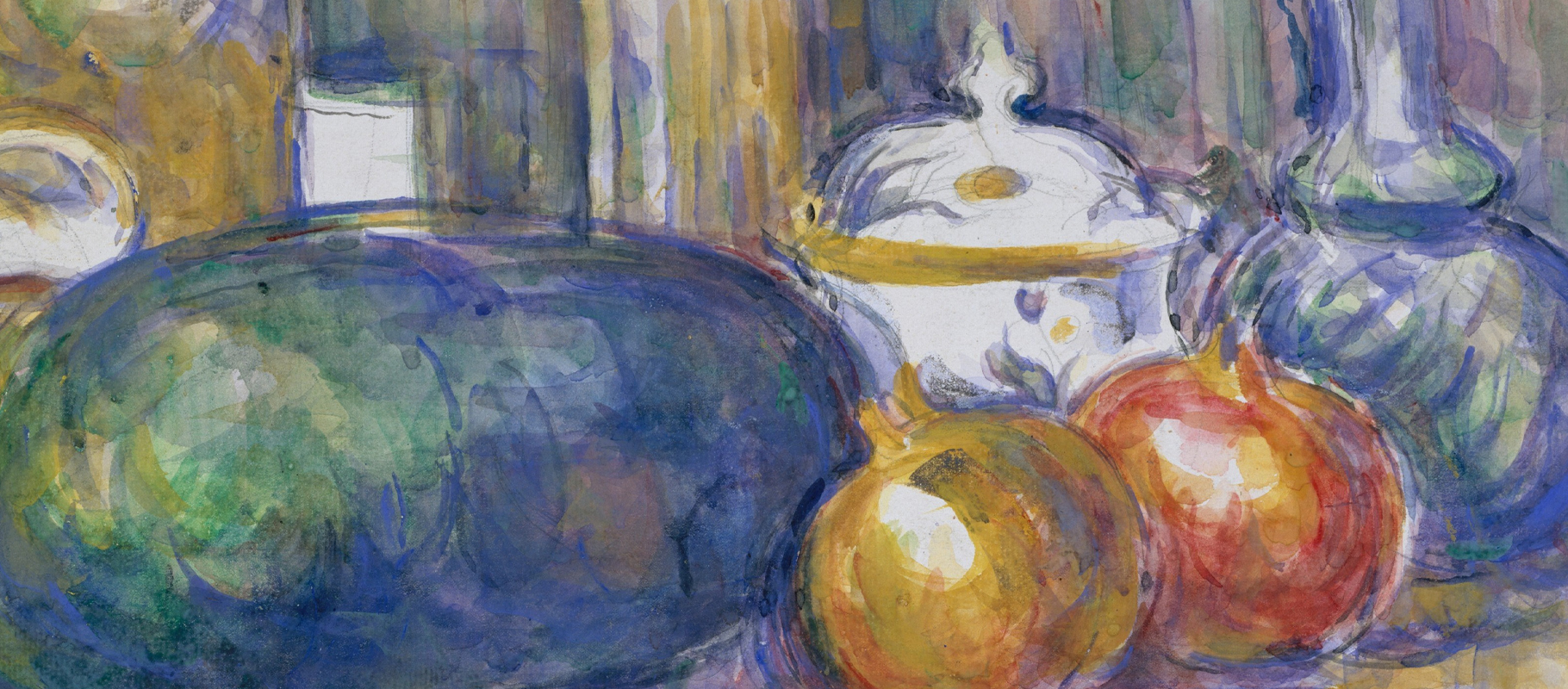 Above: a detail from Still Life with a Watermelon and Pomegranates by Paul Cézanne, 1900-06
Above: a detail from Still Life with a Watermelon and Pomegranates by Paul Cézanne, 1900-06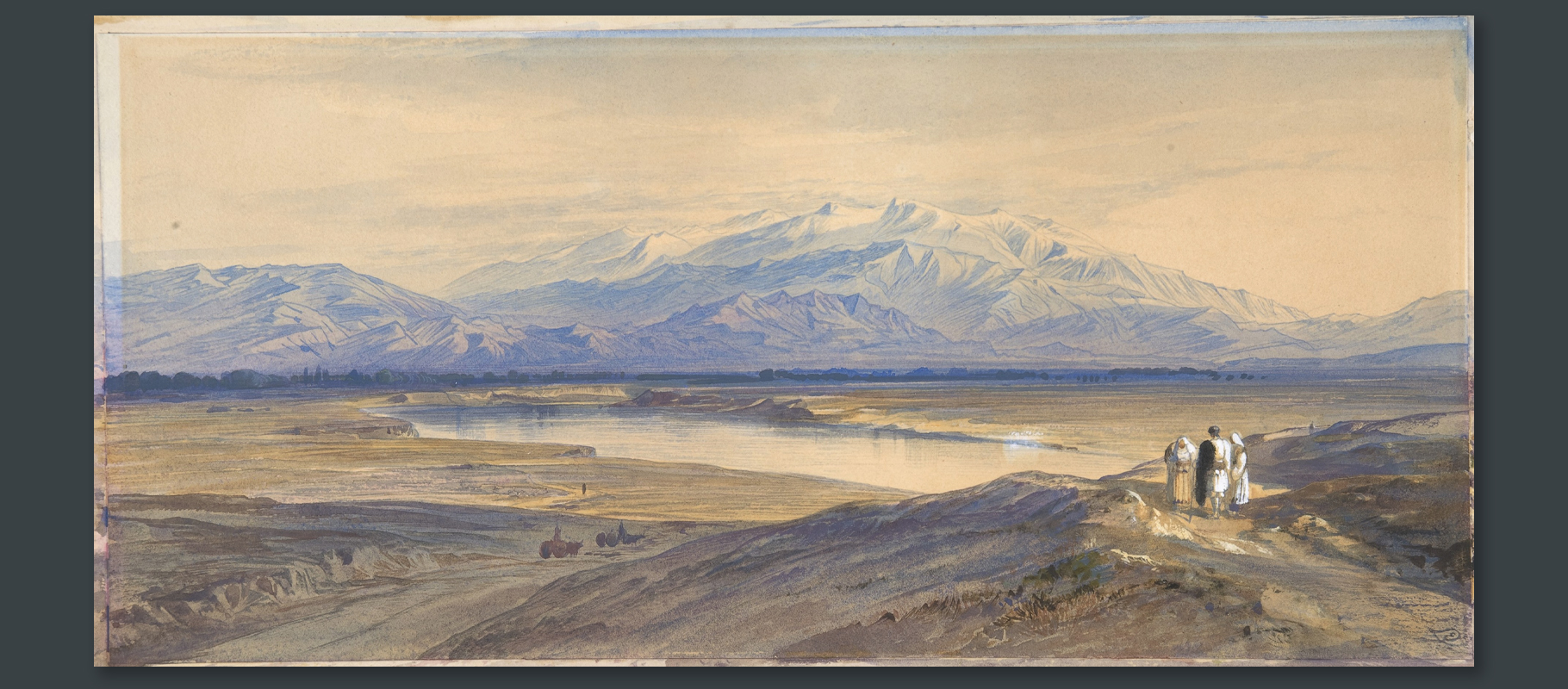 Above: the paper has discoloured on this watercolour painting due to acidic framing materials
Above: the paper has discoloured on this watercolour painting due to acidic framing materials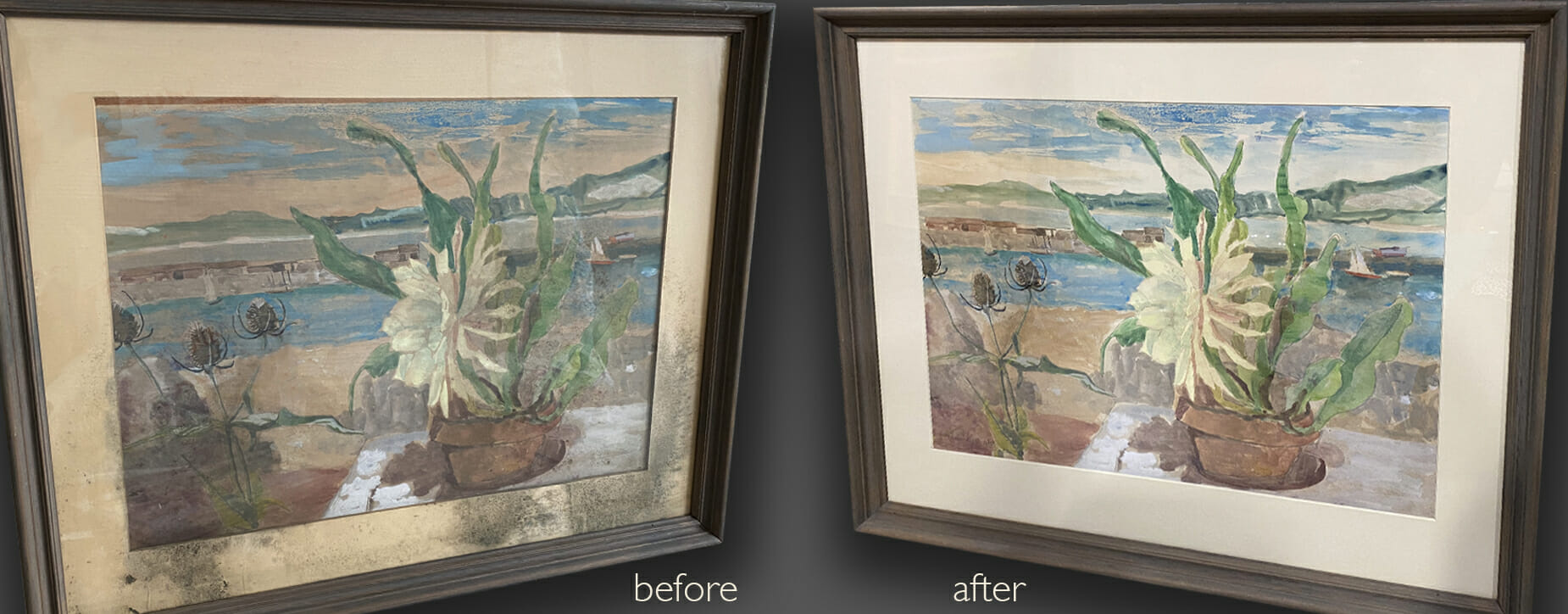 Above: this watercolour was badly affected by mould, it was restored by our conservator with a successful result
Above: this watercolour was badly affected by mould, it was restored by our conservator with a successful result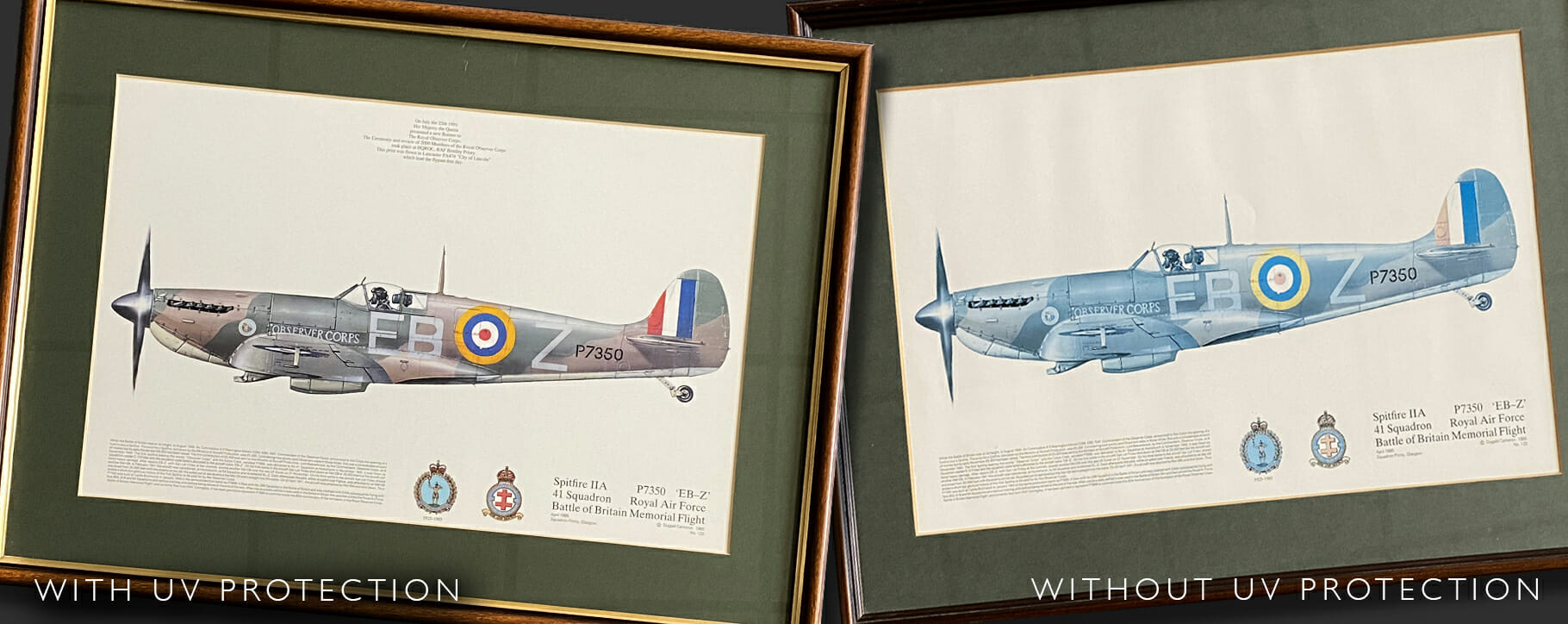 Above: the print on the left has been protected from sunlight and the one on the right shows signs of colour loss due to exposure
Above: the print on the left has been protected from sunlight and the one on the right shows signs of colour loss due to exposure 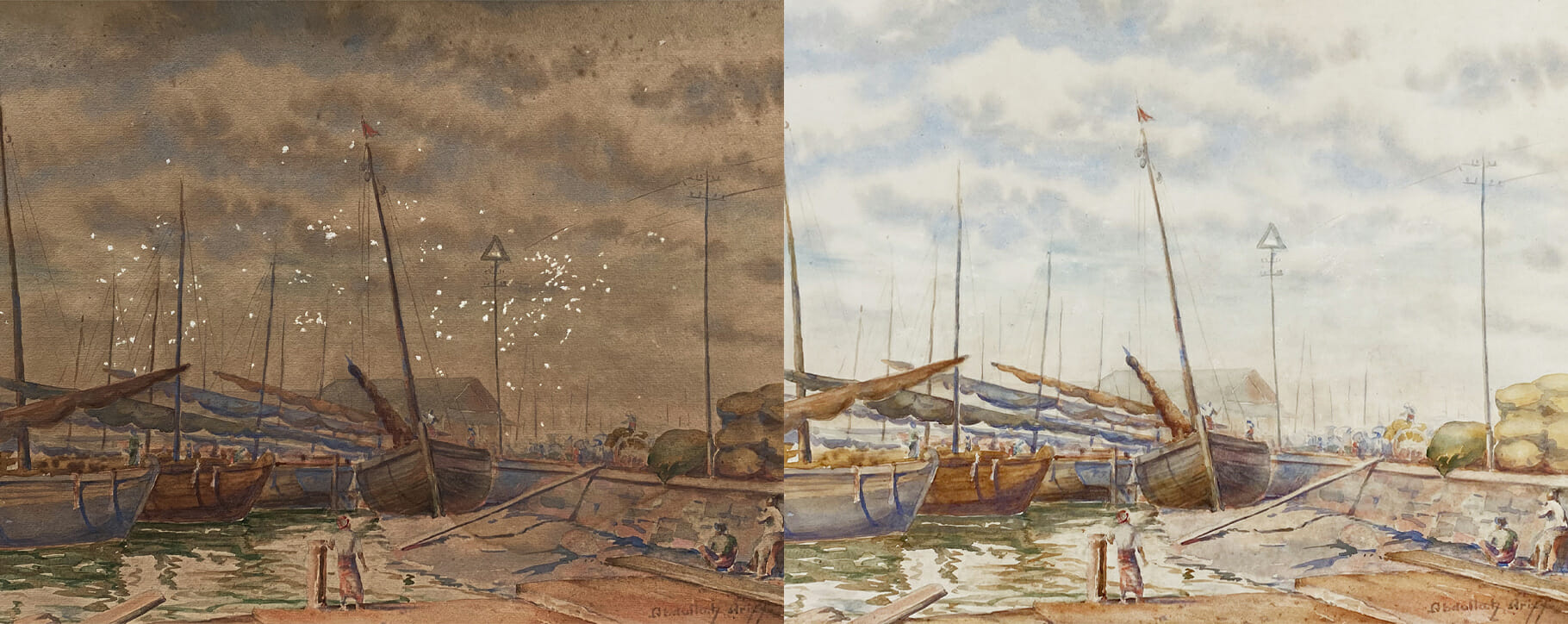 Above: this watercolour was badly affected by acid damage and natural deterioration of the paper, before and after restoration by our paper conservator
Above: this watercolour was badly affected by acid damage and natural deterioration of the paper, before and after restoration by our paper conservator 




